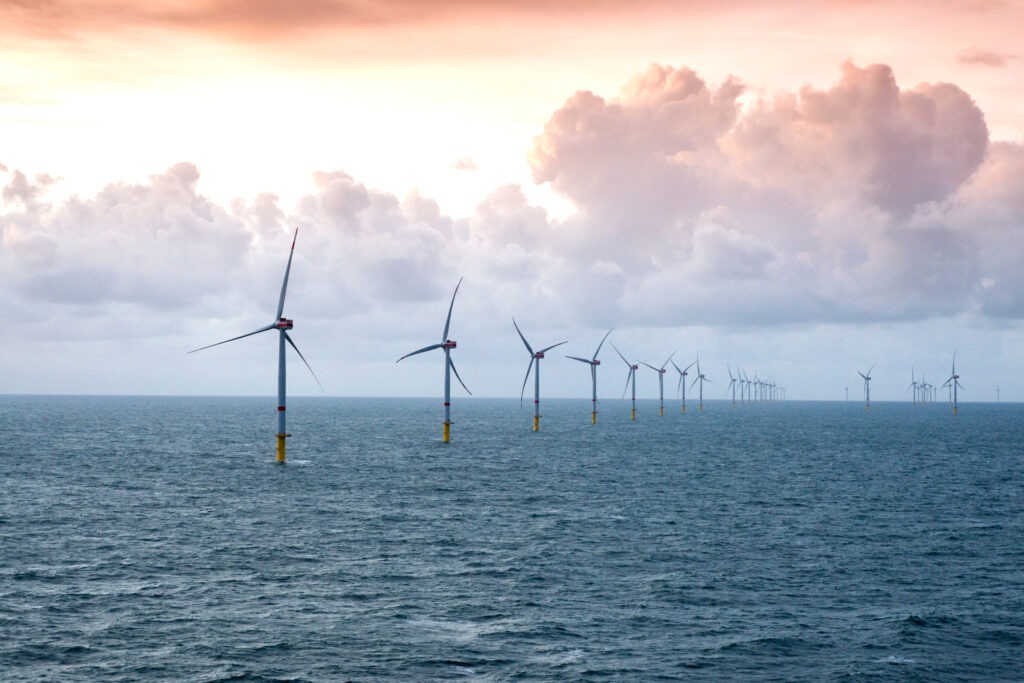Responsible Offshore Wind to Address the Climate Crisis
Climate change poses the single biggest threat to our ocean and to the future of the planet. Every tool and solution is needed as we work to address the climate crisis. Sustainable ocean-based solutions, particularly offshore renewable energy, play a crucial role.
Generating renewable energy from offshore wind has the potential to be the largest ocean-based mitigation solution in both the United States and globally. Ocean Conservancy supports a responsible expansion of offshore wind energy as an essential element of the renewable energy portfolio needed to decarbonize the electricity sector and address the climate crisis. To secure the future of our climate, our ocean and our communities, this development must advance in an equitable way that conserves and monitors biodiversity, ecosystem health and critical habitat.
Greenhouse gas (GHG) emissions must reach net zero by 2050 to keep global warming under 1.5°C—the threshold set by scientists to stave off the most severe climate change impacts. This will require the transformation of nearly every sector of the global economy, particularly electricity production, which is responsible for roughly a quarter of GHG emissions globally and in the United States. Achieving major carbon emissions reductions in the electricity sector will require development of hundreds of gigawatts of new renewables by 2050 in the United States alone.
U.S. Federal Action
The Biden-Harris administration has set an achievable target of deploying 30 gigawatts of offshore wind energy by 2030. Reaching this target would generate enough energy to power 10 million homes and cut 78 million metric tons of carbon emissions, annually. That’s equivalent to taking nearly 17 million cars off the road every year. On top of this, it would create an estimated 44,000 offshore wind jobs, like turbine technician positions, along with 33,000 additional jobs for communities who support offshore wind activity, like those who supply the materials needed to construct the wind turbines themselves.
Ocean Conservancy’s Role
Offshore wind, while providing a critical overall benefit to the marine environment by reducing carbon dioxide emissions, like any major infrastructure project may also result in negative impacts. Maximizing the benefits and minimizing the impacts of offshore wind expansion requires responsible and equitable implementation, working to protect ocean health, sharing ocean data and ensuring the inclusion of ocean users, communities and other partners, as well as meaningful consultation with Tribes. To achieve this, Ocean Conservancy advocates for offshore wind planning, siting and permitting policies that will support a more sustainable and efficient expansion of offshore wind through thoughtful legislation and common-sense regulations and policies.
In addition to advocating for federal policies that strengthen responsible offshore wind planning, siting and permitting, we are fighting to secure crucial resources and investment. This includes working to support federal investment in permitting agencies charged with advancing responsible offshore wind, including the Bureau of Ocean Energy Management and the National Oceanic and Atmospheric Administration, and advocating for research and technology development (such as at the Department of Energy) that would reduce the impacts offshore wind could have on the marine environment. We identify and help secure resources to support robust engagement with ocean users, communities and Tribes; federal agency staff capacity and robust science to sufficiently review offshore wind leasing and permitting decisions; critical research and monitoring to better understand the effects of offshore wind implementation; and long-term collaborative data management efforts. We also support other efforts to build out the U.S. offshore wind industry and establish a domestic offshore wind supply chain like supporting workforce development and investing in infrastructure that supports offshore wind.
Furthermore, Ocean Conservancy works with the White House and their policy teams to advocate for science technology and policy alignment that would advance the U.S. offshore wind energy agenda efficiently and responsibly, and in a way that minimizes environmental risk and maximizes coordination across agencies with jurisdiction over ocean resources.
Ocean Conservancy uses our expertise to incentivize the transition away from fossil fuels and to renewables like offshore wind. In doing so, we help guide the offshore wind implementation process to meet our renewable energy targets while minimizing environmental, community and cultural impacts, promoting ocean co-use.
